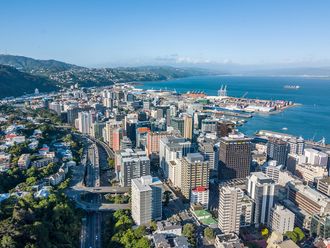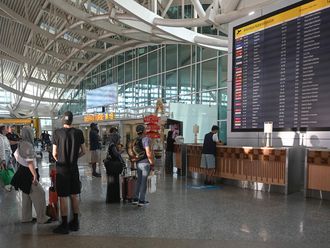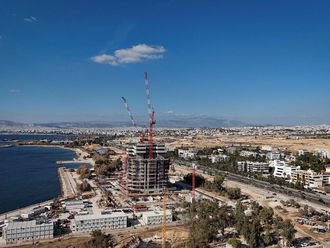Everest valley: Billions of litres of water released from the rapidly heating Himalayas could devastate villages, farmland and kill millions in Nepal, India and Bangladesh if governments and communities do not take speedy measures to curb emissions of greenhouse gases
Way above us in the Himalayan cloud are jagged, snowbound peaks Annapurna, Damodar, Gangapurna, Dhalguri.
Below us is the Thulagi glacier, a river of ancient ice snaking steeply down the Marshyangdi valley from near the top of Mount Manasulu.
Thulagi's snout is a milk-blue lake marked on few maps. It has doubled in size in just a few years and is held back only by a low wall of dead ice and earth. If Thulagi carries on melting at the present rate, nothing will stop billions of litres of water bursting through this natural dam and devastating villages, farmland and everything below.
Thulagi is one of 20 steadily growing glacial lakes in Nepal which mountain communities and scientists fear will inevitably rupture if the growth in greenhouse gas emissions is not stemmed by world leaders at the Copenhagen climate summit.
Average temperatures across Nepal have risen 1.6 degrees Celsius in 50 years, twice the global average. But here on the roof of the world, they are already nearly four degrees Celsius above normal and on track to rise by as much as eight degrees Celsius by 2050.
Temperature rises like this in the Himalayas would be a catastrophe. It is not just the future of a few mountain communities at stake but the lives of nearly one in four people in the world, all of whom rely on the Himalayas for water.
Nepalese rivers alone provide water for 700 million people in India and Bangladesh. "If there is less snow in the Himalayas, or the monsoon rains weaken, or the glaciers melt with climate change, then all south Asian farming, industry, water supplies and cities will suffer," said Nepalese climate specialist Ngamindra Dahal.
No snowfall
On a 1,000-mile journey from the world's greatest water source in the Himalayas, down rivers and then by train through Nepal, India and Bangladesh to the Bay of Bengal, we saw evidence of profound changes in weather patterns right across south Asia.
Wherever we went we were told of temperature increases, and found governments slowly waking up to the threat of climate change and communities having to respond in any way they could to erratic rains and more serious droughts, floods and storms.
The starting point was Jomsom, a small town in the Kali Gandaki valley, 2,300 metres high and at the heart of the Annapurna range. This remote town, which saw its first ever car last year, has experienced no snowfall this winter.
"The temperature is higher, so there's less snow, and less meltwater in spring to plant crops. People have no need to come down from the mountains in winter. They can grow chillies and peppers now," said Sunil Pant, a Nepalese MP.
"But now they cannot grow wheat or staple foods."
It's the same story even in the Everest valley region, where the snowfall is becoming increasingly unpredictable. Already, some communities believe they are a living under a death sentence, according to Lucky Sherpa, the MP for the region.
"They say they are not sure there will be a tomorrow," she said. "The snow used to come up to your waist in winter. Now children do not know what snow is. We have more flies and mosquitoes, more skin diseases.
"Communities are adapting by switching crops, but diseases are moving up the mountains, the tea and apple crops are being hurt and wells are drying up."
Two hundred miles away in Kathmandu, Simon Lucas, a climate change officer at the UK Department for International Development, confirmed that river flows in winter have seriously declined.
"The trends are clearer in Nepal than in other countries," he said. "People cannot plant their crops in the spring because the winter snows are not so heavy. They have always relied on snow and glacier melt".













